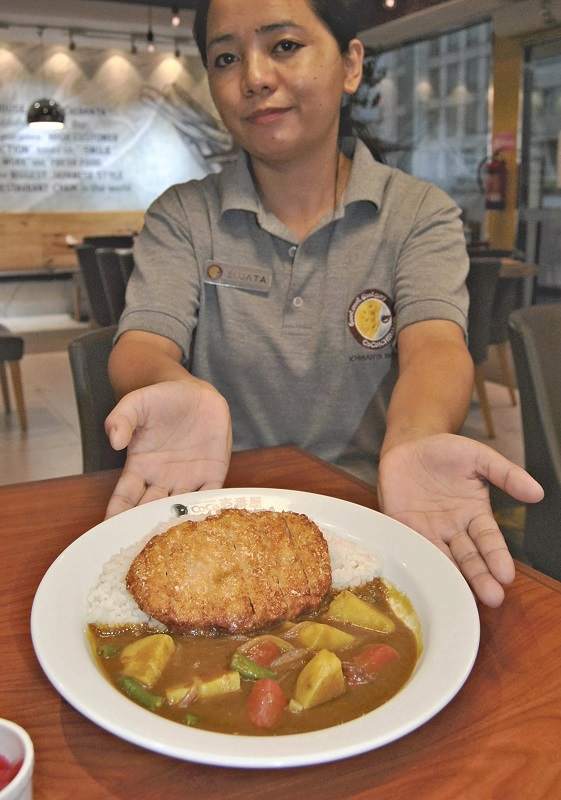Japan restaurant operators making further inroads in Asia

The Yomiuri Shimbun
A curry and rice meal served at Curry House CoCo Ichibanya’s Gurugram branch
BANGKOK — Leading Japanese restaurant chains are making forays into Asian markets in the hope of tapping into previously unexplored regions such as India and the suburbs of large cities.
The growing popularity of Japanese food overseas has provided a boost, but the key to steady business is the development of fine-tuned flavors and ingredients tailored to local tastes.
The skyscrapers of tech firms and multinational corporations stand side by side in Gurugram, a suburb of New Delhi that has come to symbolize India’s rapidly growing economy.
Leading Japanese restaurant chain Curry House CoCo Ichibanya operator Ichibanya Co. opened its first Indian branch in Gurugram in August 2020. It became a hot topic of conversation as a Japanese-style curry restaurant opened in the birthplace of curry. Japanese expatriates have taken Indian colleagues and friends to the restaurant, and the branch steadily grew. The most popular menu item is chicken cutlet curry, which costs 475 rupees (¥800).
A local staff member said it is interesting that customers can choose the spiciness and toppings because such a system does not exist at Indian restaurants.
Article continues after this advertisementZensho Holdings Co., which operates beef bowl chain Sukiya, operates outlets in India. In consideration of Hindus who do not eat beef, management created a menu with dishes containing chicken and vegetables.
Article continues after this advertisementAlthough India is a massive market, many people prefer the local food and the country leans conservative, according to an industry source. Even so, the number of Japanese restaurants has gradually increased to about 130 as of June 2021, according to the Japan External Trade Organization (JETRO).
The number of Japanese restaurants overseas nearly tripled from about 55,000 in 2013 to about 159,000 in 2021. One factor behind the increase is the boost from people who became familiar with Japanese food during their visits to Japan during the pre-pandemic travel boom.
In Southeast Asia, where Japanese restaurants established a foothold a while ago, companies are opening outlets in the suburbs and rural areas. A survey conducted by the JETRO Bangkok office last autumn showed the number of Japanese restaurants in Bangkok decreased by 1.5% from the previous year due to COVID-19 restrictions on businesses, but increased in the suburbs and rural areas by 15.5%.
“It’s not just Japanese capital,” a JETRO Bangkok official said. “Thai capital in Japanese restaurants is increasing, too.”
Careful planning necessary
However, there have been many cases of missteps.
In countries with a large Muslim population, for example, halal needs to be considered. In India, menus have to please its large population of vegetarian customers. Some Japanese companies withdraw after several years because of trouble with local joint ventures.
“It’s difficult just to bring over what is sold in Japan,” said Ryosuke Yasuda of R&A Information Service Co., a Thailand-based food research firm. “Detailed research is necessary on things like local preferences, price ranges and regulations.”
Political risks have emerged, as seen in the case of Russia, where foreign-backed restaurant chains have withdrawn in light of the country’s invasion of Ukraine. In Myanmar, the local business environment suddenly changed after a military coup in February last year.
To increase agricultural exports, the Japanese government in April began establishing export support platforms for an envisioned eight countries and regions, including Thailand and Singapore. These platforms will analyze market characteristics in each location and provide consultations in a bid to expand the number of restaurants.
RELATED STORIES
Not your usual Japanese restaurant
The best Japanese restaurant in the country is in Cebu
Uncommon curry in a Japanese resto